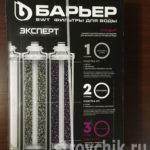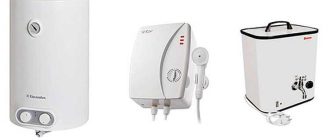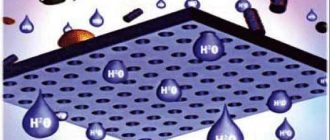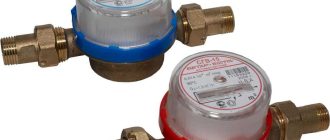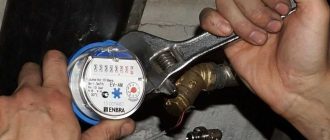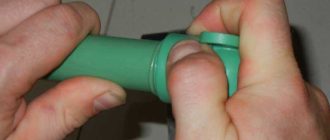The tap water in our taps is mostly unsuitable for drinking. In order not to buy bottled water, you can purify what you have to the desired state. One way is to install a water filter under the sink. They are usually equipped with a small faucet and mounted simply. Their disadvantage is a decent price and the need to replace the cartridges. But they are good at purifying water that complies with GOST.
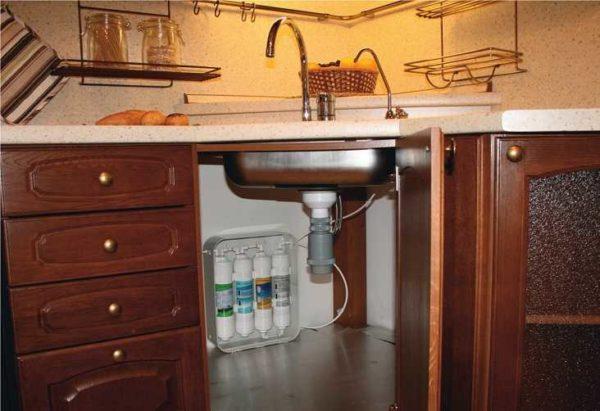
Obsah článku
Types of filters under the sink
To obtain drinking water at home, there are water filters under the sink of two types – flow-through cartridge and using reverse osmosis technology (reverse osmosis system). These stationary models are externally very similar. They consist of several plastic flask-cases, in which the filter elements are located. Reverse osmosis system has an additional flask with a membrane.
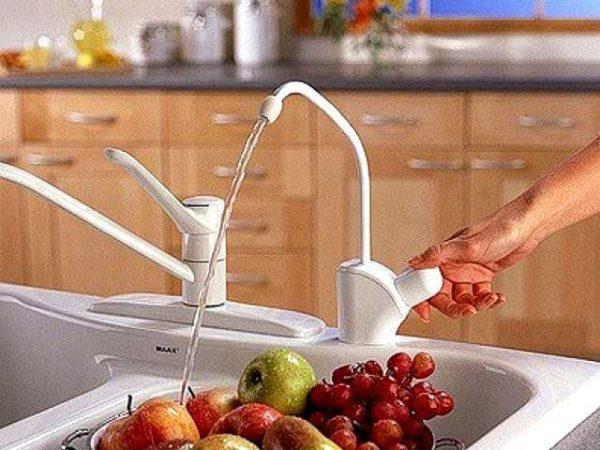
Cartridge and reverse osmosis system – what is the difference?
The main difference between the reverse osmosis system is the use of a special semipermeable membrane. The whole point of this purification is that only water molecules pass through the very small pores of the membrane. Organic and inorganic substances dissolved in it simply do not pass through. Everything down to bacteria and microbes are trapped.
The degree of purification of water reverse osmosis systems – 98-99%. That is, at the output we get almost distilled water that has no taste or odor. Prolonged use of such a liquid leads to the leaching of salts from the body. Therefore, at the output of the reverse osmosis system put mineralizer, in some models it is immediately in the package. This is an additional flask, which contains a backfill of useful minerals. It enriches the composition of water, bringing it to the norm.
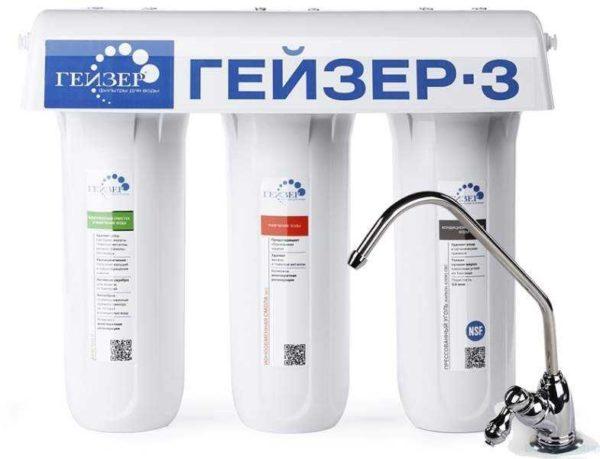
When using stationary flow-through cartridge filters under the sink, you will not get such clean water. Reverse osmosis removes salts, and flow filters (and pitchers too) remove them partially. The difference is clear and tastes good. In addition, after the flow filter, the scale in the kettle remains, but it has a different character, it becomes more friable and is easily removed.
When using cartridge filters, we can not say that the purification is bad (about 70-80% vs. 95-98% in reverse osmosis), but without the presence of a stage of bacterial purification (there are such filter elements with silver additives), it may be risky to drink it without boiling.
Features of operation
In fact, cartridge systems, and reverse osmosis systems are multistage filters, which implies regular replacement of filter elements. Each such element has a certain resource, which is usually specified in liters, it is how much water it can process without loss of quality. Or often in parallel indicate a time interval of six months, a year, etc. That is, even if the filter has not worked out its resource, it must be changed. Just in them accumulate microorganisms that, if the terms are violated, can get into the water in mass quantities.
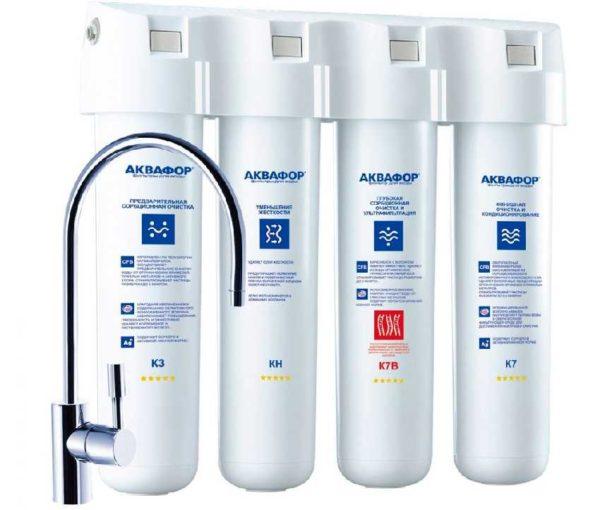
There is another situation, the water deteriorates in quality even before the specified time interval and resource. This happens at an increased level of contamination and the filter exhausts its life much faster. There are two ways out: change the filter elements as they become contaminated or put before the installation of an additional stage of purification, which solves this problem.
Features of the choice
The cartridge system is good in that you can select filter elements depending on the composition of water (we are talking about both systems). Therefore, before buying it makes sense to analyze the water, and then select the composition of filters to specifically remove the existing problem. For example, reverse osmosis systems do not work well on water with a high iron content. If you have such a problem, before the installation should be put equipment to remove iron (aeration units or catalytic filters) and only after them you can connect filters with reverse osmosis.
The second point: for normal operation of reverse osmosis requires a decent pressure. Depending on the type of membrane, 1.5 atm (50G) or at least 3 atm (100G) is required. If your water supply does not have such a pressure, it is necessary either to take the installation with a pump (expensive and few), or put a pump in the system, increasing the pressure.
Reverse osmosis is connected to the sewage system. There he drains the concentrate of salts that are removed from the water. If you are planning on installing in a private home and you have a drainage pit or storage tank, you need to keep this in mind. A decent amount of water goes into the sewer, for every liter of purified water, 2-4 liters of concentrate (depending on the hardness) are discharged. Multistage cartridge filter is connected only to the water supply, and all the salts discharged by it remain in the filter.
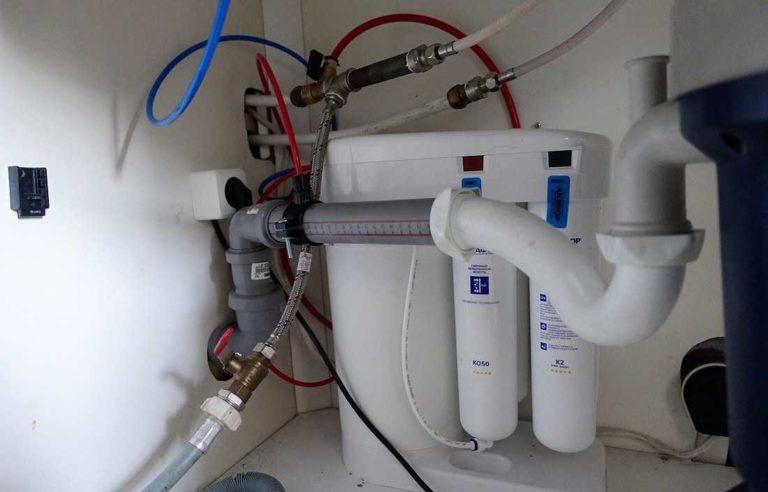
Since reverse osmosis removes almost all the salts, with prolonged use of such water, the salts are removed from the body. To solve this problem at the output of the filter put mineralizer – a flask with a backfill of mineral salts. It can go in the assembly, and you can put it after the filter. Only it should be said that drinking water without mineralization is more pleasant than “salted”, and the taste of dishes on such water is better. Therefore, many manufacturers provide two modes of operation – with mineralizer or without (switched by the tap).
Here seems to be all the information that can somehow affect your choice between multistage filter purification and reverse osmosis. To say specifically that these water filters installed in the kitchen are good, and these are not, none of the experts will not say. Everyone has their own point of view, and for each better option. And each system has its own advantages.
Multistage filters with cartridges
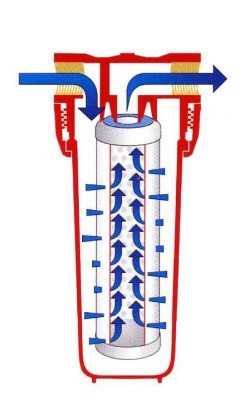
The cartridge itself consists of a housing and a filter element. From what contaminants are cleaned depends on the filter element. The water flows as follows:
Principle of operation of the cartridge:
- enters the inlet pipe;
- flows between the bulb wall and the cartridge;
- as it passes through the cartridge material, it is purified;
- rises through the cavity of the filter element;
- exits the second spigot.
In multi-stage drinking water filters, this transformation takes place sequentially in each of the flasks. To make this possible, they are all united by a common element located in the upper part and connecting the individual housings into a single purification system.
The multistage flow-through water filter works at any pressure that the water movement can provide. The flasks are usually made of plastic, it can be transparent or not. Sometimes there are stainless steel housings, but it is expensive and there are not very many of them.
Parameters and characteristics
The main indicators are performance, service life, and non-critical – pressure loss, maximum operating temperature. Most often when choosing a water filter in the apartment, pay attention to the service life. We have already mentioned it above.
Second, the performance. This is the amount of water that can be purified by the unit for a certain period of time. Usually indicated liters per minute (l/min), but it can also be per hour or per day.
Next, you should pay attention to the size of the filter. There are two standard sizes:
- Big Blue (BB) (in Russian BigBlue) – diameter 185 mm.
- Slim Line (SL) (SlimLine in Russian) – diameter 120-130 mm.
The most common filters of larger format, they are desirable to take, there will be no problems with the replacement of cartridges. There are cases of individual size, but the difficulty here is that in this case you will be tied to the parts of only one company, while the standard filter elements can be taken from other manufacturers. True, not always fits the “head” to the lid, but for these cases there are adapters.
The height of the housing is different. The most common sizes are 10 and 20 inches. If space permits, it is better to take the larger ones. The resource will be increased and it is necessary to change cartridges less often. But in general, when choosing the size, you should be guided by your needs, a small filter is enough for one or two people.
What are the filtering elements
There are a lot of organic and inorganic substances dissolved in water, in addition, there are mechanical impurities in the form of suspension – sand, rust, pieces of winding, etc. In order to obtain normal drinking water, they must be removed and brought to a normal content. For this purpose, different filtering elements – cartridges are used. They come in several types:
- Polypropylene. In multistage purification systems, they are put first. Their task is to remove mechanical impurities. Contaminants accumulate on the surface and in the thickness of the material.
- Coal. Contains activated carbon. They remove chlorine and its compounds, cope well with organic compounds, remove extraneous odors. In such cartridges, the usual activated carbon made from coconut shells (granulated or pressed). Depending on the type of carbon, the efficiency of purification changes (the best – coconut).
- Ion-exchange. Such cartridges contain ion exchange resins. They perfectly cope with water softening, magnesium and calcium salts (hardness salts) are replaced by sodium. Their disadvantage is periodic regeneration, restoring performance. Track the time of regeneration can be traced by the appearance in the scale of the kettle.
- Combined. In multistage systems are rarely used, the main application is in single-kettle versions. It contains several types of filter elements. The quality of purification is worse, but if it is necessary to slightly improve several indicators of water at once (slightly out of the norm), you can use and such options.

Cartridges have their own parameters. In addition to the list of contaminants that it removes and physical dimensions, indicate the resource – the number of liters of water that the element can clean. It is usually specified in liters, but often put also a time resource, not more than 3 months, for example.
Popular models of cartridge filters
Filters installed under the sink are most often three-column (three-stage), less often there are models with four bodies. In any case, the first is a mechanical filter, then an ion-exchange filter and the last charcoal filter. If the elements are four, the carbon ones are put two, but with different types of filling. Sometimes on the fourth stage put bioprotection, a new generation of filters with silver for disinfection.
The most popular brands Aquaphor, Geyser, Barrier, not bad have shown themselves products brand Atoll (Atoll). Select the system first of all on the hardness of water, it is divided into normal, hard, very hard. If there are any other problems, such as the need for bacterial purification, look for models that can give you such purification. Then look at the performance and size.
Here is an example of a popular filter – Barrier Expert for installation under the sink. Small size, good performance and high quality water purification – these are the criteria for choosing this model. And the convenience and speed of changing the filter, an additional bonus for the buyer.
- Popular filter Barrier Expert Ion Exchange
- Barrier Expert filter assembled under the sink
- Three cartridges for the filter
| Název | Výkon | Purified water temperature | Pracovní tlak | Počet stupňů čištění | Pro jaký druh vody | Cena | Země výroby |
| Barrier “Expert Standard” | 2 l/min | from +5°C to + 35°C | up to 7 atm | 3 | Normal hardness | 40$ | Rusko |
| Barrier “Expert Complex” | 2 l/min | from +5 ° C to + 35 ° C | up to 7 atm | 3 | For hard water with high iron content | 95$ | Rusko |
| Barrier “Expert Ferrum” | 2 l/min | from +5 ° C to + 35 ° C | up to 7 atm | 3 | For water of normal hardness with high iron content | 62$ | Rusko |
| Geyser 2PK Lux | 2.5 l/min | up to +40°C | at least 0.5 atm | 2 | Normal hardness (without mechanical filter) | 33$ | Rusko |
| Geyser 2IVZh Lux | 2.5 l/min | up to +40°C | at least 0.5 atm | 2 | Hard (without mechanical filter) | 35$ | Rusko |
| Geyser 3 IVJ lux | 3 l/min | up to +40°C | from 0.5 atm to 7 atm | 3 | For hard water | 53$ | Rusko |
| AQUAPHOR CRYSTAL A | 2.5 l/min | from +5°C to + 40°C | from 0.63 atm to 6.3 atm | 3 | For water of medium hardness | 40$ | Rusko |
| AQUAFOR Crystal KVADRO NNV | 2.5 l/min | from +5°C to + 40°C | from 0.63 atm to 6.3 atm | 3 | For very hard water | 103$ | Rusko |
| AQUAFOR Trio Fe | 2.5 l/min | from +5°C to + 40°C | from 0.63 atm to 6.3 atm | 3 | For water with high iron content | 60$ | Rusko |
| Crystal ECO | 2.5 l/min | from +5°C to + 40°C | from 0.63 atm to 6.3 atm | 3 | For water disinfection | 75$ | Rusko |
| Praktic EU200 | 1-2 l/min | from +5°C to + 35°C | 1,4 atm až 7,9 atm | 3 | For hard water | 35$ | Německo |
| Praktic EU312 | 1-2 l/min | from +5°C to + 35°C | 1,4 atm až 7,9 atm | 4 | For water with high iron content | 85$ | Německo |
| Praktic EU320 | 1-2 l/min | from +5°C to + 35°C | 1,4 atm až 7,9 atm | 4 | U tvrdé vody ultrafiltrace | 100$ | Německo |
| Atol A-211E g/D-21s STD | from +5°C to + 40°C | až 6 atm | 2 | Pro další úpravu pitné vody | 98$ | ||
| Atol A-211E g/D-21s STD | from +5°C to + 40°C | až 6 atm | 3 | For hard water | 125$ |
Říci, že některý z těchto výrobců je lepší, je nemožné, všichni mají přibližně stejný počet pozitivních i negativních recenzí. Výrobci bariérových filtrů mají velmi špatně vyvinutý servis, i když samotné výrobky nejsou špatné. Nemůžeme říci, že Geyser je v tomto ohledu ideální, ale věci jsou o něco lepší. Obecně platí, že ruští výrobci zatím nemohou potěšit kvalitní služby, takže všechny problémy budou muset řešit sami.
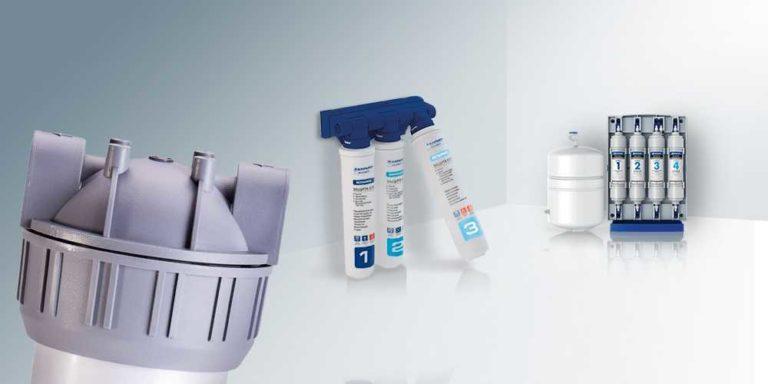
Další tip, který může být užitečný při výběru filtru, je podívat se nejen na cenu sady. Mnohem důležitější jsou náklady na spotřební materiál (kazety) a jejich standardní velikosti, způsoby připojení. Důležitý je také komfort údržby, filtry bude nutné měnit, takže snadná výměna je výhodou.
Systémy reverzní osmózy
Pod dřez v kuchyni můžete umístit vícestupňové filtry na čištění vody fungující na principu reverzní osmózy. Jsou ideální, pokud má voda příliš mnoho odchylek od normy. Při instalaci běžného vícestupňového filtru je velmi obtížné dosáhnout požadované kvality vody, s největší pravděpodobností bude nutné do systému přidat několik dalších jednotlivých jednotek, které vám umožní dosáhnout vody normální kvality. Reverzní osmóza si v každém případě s úkolem poradí, rozdíl je pouze v množství vody, které bude s odstraněnými solemi vypouštěno do kanalizace (čím tvrdší a znečištěnější voda, tím více koncentrátu se vypouští).
Principle of operation
Systém reverzní osmózy se skládá z membrán s velmi malou velikostí pórů. Téměř všechny látky ve vodě, včetně mikroorganismů, bakterií a mikroflóry, mají molekuly větší než molekuly vody. A póry v membráně jsou tak malé, že jimi prochází pouze voda. Membránou proniká jen velmi málo cizorodých látek - maximálně 0,5-2% z celkového množství vody.
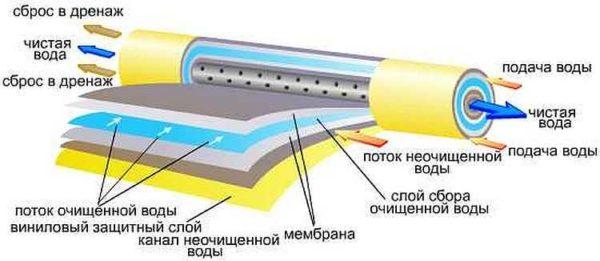
Na druhé straně všechny soli zůstávají na povrchu membrány. Aby ji neznečišťovaly, jsou odstraňovány proudem vody do kanalizace.
Features of operation
Velikost membrány pro kazetu je standardní. Doplňují se pouze specifické vlastnosti membrán. Dodávají se ve dvou typech podle kapacity:
- 50G s kapacitou až 196 litrů za den (cca 130 ml/min);
- 100G - rychlost čištění vody přibližně 400 l/d (280 ml/min).
První typ membrán je levnější, druhý je dražší. K zajištění jejich činnosti je zapotřebí určitý tlak, pro 50G potřebujete alespoň 1,5 atm, pro 100G alespoň 3 atm. Pokud takový tlak v systému není, můžete najít jednotku s vestavěným čerpadlem, můžete si ji dát sami, odpovídající parametrům systému.
Ještě jedna věc: vodní filtry pod dřezem s reverzní osmózou nemají rády příliš chlorovanou nebo železitou vodu. V zásadě jsou před membránou předfiltry, které tento problém eliminují, ale dávejte pozor na to, jaký typ vody je pro tento systém určen.
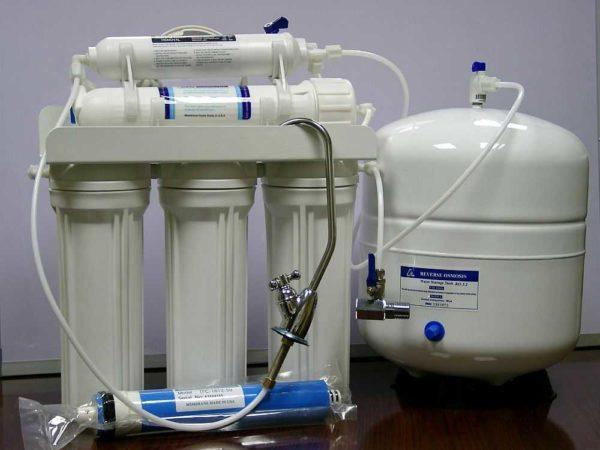
Další nuance: takové čisticí systémy pracují poměrně pomalu, sklenice nebo půlka za minutu, to není mnoho. Proto se k soupravě často dodává nádrž na uchovávání vyčištěné vody. Nejedná se o pouhou nádrž, ale o nádrž membránového typu, která uvnitř udržuje určitý tlak. Proto lze přečištěnou vodu používat i v případě, že v přívodu vody není tlak. Jen nezapomeňte, že charakteristiky udávají celkový objem nádrže. Ve skutečnosti je zásoba vody v ní asi 2krát menší.
Some popular models
Vzhledem k tomu, že systémy jsou si velmi podobné, vyrábějí je stejné společnosti jako běžné kazetové systémy na čištění a změkčování vody, takže nové názvy jsou vzácné. V sestupném pořadí podle oblíbenosti: Gejzír, Aquaphor, Atoll, Bariéra. Charakteristiky některých modelů jsou shrnuty v tabulce. Podle ní si můžete udělat rámcovou představu o pořadí cen a rozdílech ve vlastnostech, ale každý model má obvykle několik modifikací, obvykle pro vodu různé tvrdosti nebo s různými dalšími problémy (zvýšený obsah železa, bakteriální kontaminace atd.).
| Název | Kapacita | Pracovní tlak | Počet stupňů čištění | Teplota vody | Nádrž na vodu | Cena |
|---|---|---|---|---|---|---|
| Atol A-550 Patriot | 120 l/den | 2,8 - 6,0 bar | 5 | 4°C - 38°C | je | 130$ |
| Atol A-575E (ruské výroby) | 195 l/den | 2,8 - 6,0 bar | 5 | 4°C - 38°C | je | 200$ |
| Aquaphor DWM-101S Morion (s mineralizátorem) | 187 l / den | 2 - 6,5 atm | 6 | 5°C - 38°C | 5litrová nádrž | 120$ |
| Aquaphor Crystal Eco H (ochrana proti bakteriím v tvrdé vodě) |
60 l/den | 2 - 6,5 atm | 4 | 5°C - 38°C | ne | 90$ |
| Geyser Prestige-P s čerpadlem | 270 l/den | od 1,5 atm | 5 | 5°C - 38°C | Nádrž o objemu 12 l | 180$ |
| Gejzír Prestige-M (s mineralizátorem) | 200 l/den | od 3 atm | 6 | 5°C - 38°C | Nádrž o objemu 12 l | 130$ |
| Bariéra Profi Osmo 100 | 228 l/day | 3 – 7 atm | 5 | 5°C – 35°C | 8 liter tank | 140$ |
| Barrier K-OSMOS (with pump) | 200 l/den | 3 – 7 atm | 4 | 5°C – 35°C | back 8 liters | 120$ |
What else you need to know about reverse osmosis systems, they must be operated continuously. Long interruptions are very undesirable.


